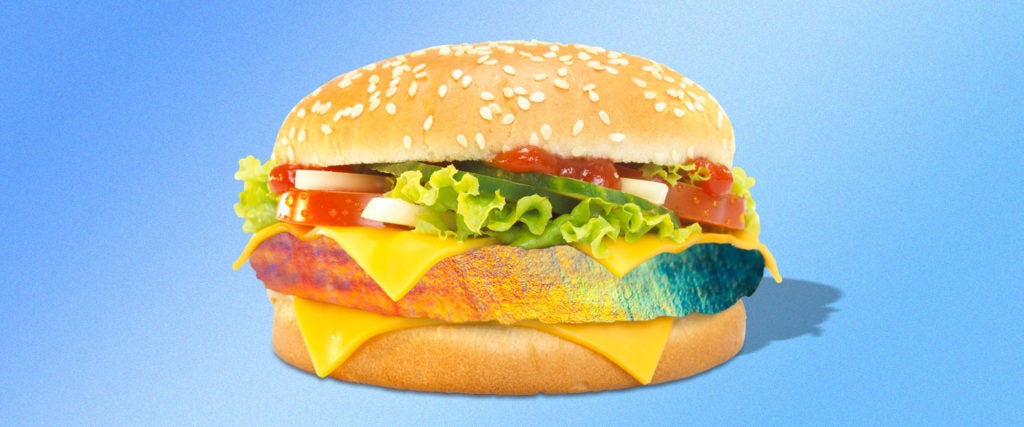For a moment I thought to myself, “Who the hell needs edible holograms? Have we not denatured food enough?” Then I remembered that I recently openly advocated for mechanically shaped, blue-dyed macaroni and cheese. So upon further consideration, I am about ready for holograms to appear on my every meal. And according to some new research from the American Chemical Society, my desires may soon be met.
For better or worse, these holograms won’t involve digital Elvis performing a little song and dance atop my cereal bowl. Rather, the holograms will be more akin to holograms on objects as we know them, like the little designs in our driver’s licenses that help convenience store clerks ensure that I’m not actually a 14-year-old trying to buy some cigs to go smoke underneath the bridge with my hooligan friends.
Typically, these holograms require carving symbols into metals, which we technically aren’t supposed to eat. Food holograms have been attempted in the past, but have only been successful on specific types of chocolate and required new molds each time they were used.
As such, researchers sought to create a non-toxic edible hologram that could be quickly and easily replicable. To do so, they made a solution using corn syrup, vanilla and water applied to a thin film. This film was then coated with a layer of food-safe black dye. Using a laser, they could then carve off this black layer, revealing a multi-color nanostructure that diffracted light much in the way traditional holograms do. The effect looks similar to black scratch paper, but with shiny coloring beneath the coating.
This is about as far as the research has gotten thus far, so there’s a bit of work to be done unless we can all prove there’s a huge market for dyed-black foods. In the future, though, it could be possible that a clear coating could be developed, allowing for a more universal application.
According to a press release from the American Chemical Society, food holograms could be used to label a product’s expiration date or sugar content, among other noble uses. Obviously, though, it would mostly be utilized to make foods gaudy and branded, appealing primarily to children. Kids will refuse to eat anything without a SpongeBob hologram on it!
And by kids, I probably mean me.

